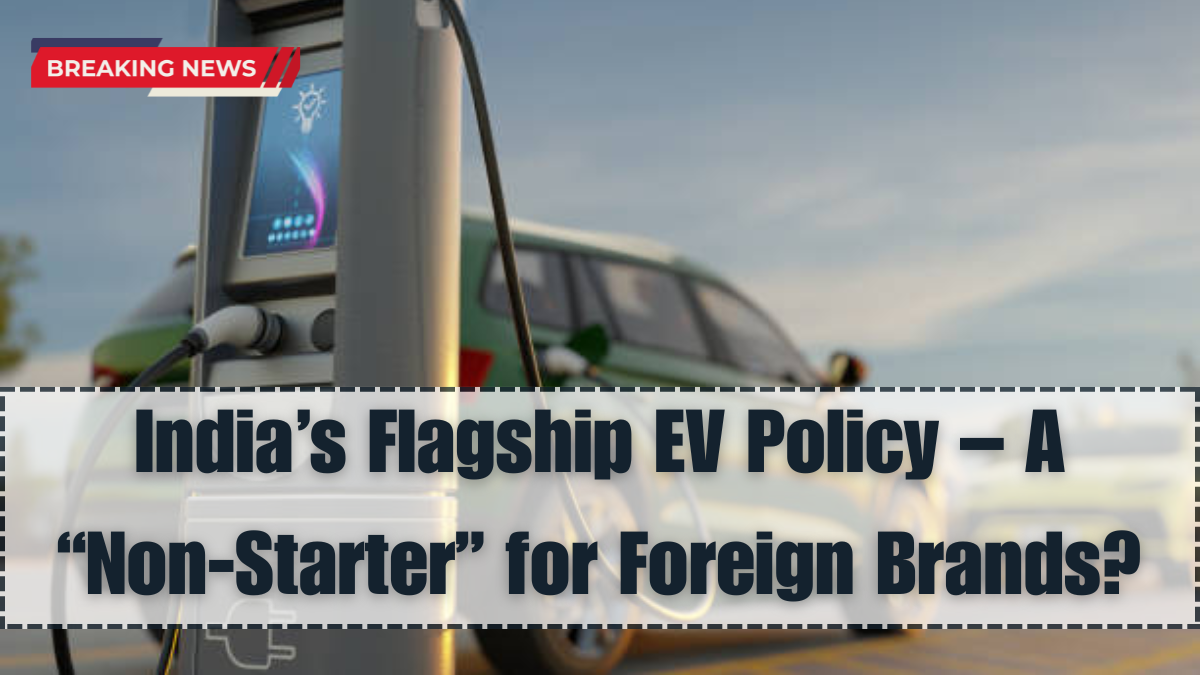India’s ambitious electric mobility drive is facing fresh criticism from global automakers. Despite strong government backing and incentive schemes, many foreign companies are labeling the country’s EV scheme critique as justified, calling it a “non-starter” in practical terms. While the intentions are bold, issues related to infrastructure, clarity, and execution are causing friction with global brands.
In 2025, India remains a fast-growing EV market, but feedback from global players suggests that more streamlined policies are needed to truly unlock international investment in the sector.

What Does the Flagship EV Scheme Offer?
The Indian government’s flagship EV scheme includes several key components:
-
Production-linked incentives (PLI) for EV manufacturers
-
Tax rebates for buyers of electric two-, three-, and four-wheelers
-
Reduced import duties on EV parts and batteries
-
Subsidies for setting up charging infrastructure
-
Support for battery-swapping models and recycling units
Yet, many foreign automakers argue that the implementation of these incentives is slow and unclear, with frequent policy changes at the state level creating confusion.
Why Global Automakers Are Holding Back
According to the EV scheme critique from international firms, there are several major challenges:
-
Unclear localization timelines: The requirement to source a large percentage of components locally within a short window is viewed as aggressive.
-
State-level inconsistency: Incentives and policies vary widely between states, making pan-India strategies difficult.
-
Infrastructure gaps: Charging stations, grid readiness, and land allocation for EV units remain weak in many Tier 2 and Tier 3 cities.
-
Bureaucratic hurdles: Long approval times and unclear compliance rules delay setup and operations.
This has caused several firms—especially from Europe and East Asia—to either delay or shelve their India EV plans for now.
What Global Brands Are Saying
While some companies like VinFast and Hyundai are making moves, others have voiced strong reservations. Here’s a snapshot of the current foreign sentiment:
| Brand | Status in India (2025) | Position on EV Scheme |
|---|---|---|
| Tesla | Opted out of local production | Demanded clearer tax roadmap |
| BYD | Facing approval delays | Waiting for policy clarity |
| Volkswagen | On hold for EV manufacturing | Cited localization concerns |
| Nissan | Slow EV rollout | Mentioned infra and support gaps |
| VinFast | Moving ahead with Tamil Nadu plant | Received fast-track clearance |
The EV scheme critique from such brands indicates that although India is a promising EV market, it needs more coordinated and investor-friendly policy action.
What Needs to Improve?
To regain global automaker trust, several steps can strengthen India’s position:
-
Unified national EV policy that aligns state and central regulations
-
Simplified compliance processes for PLI, FAME, and tax benefits
-
Dedicated EV manufacturing zones with plug-and-play infrastructure
-
Faster approvals for land, energy, and environmental clearances
-
Better after-sales ecosystem for imported EVs
Without addressing these gaps, India risks being overtaken by other Southeast Asian markets that offer more business certainty.
FAQs
What is India’s flagship EV scheme about?
It is a set of government policies including incentives, subsidies, and infrastructure development aimed at promoting electric vehicles in India.
Why are global automakers criticizing the EV scheme?
Due to issues like localization mandates, state-level inconsistencies, and infrastructure gaps, many foreign companies find the scheme hard to implement.
Which companies have opted out of Indian EV manufacturing?
Brands like Tesla and Volkswagen have delayed or declined manufacturing in India citing unclear policies and bureaucratic delays.
What does the EV scheme offer to manufacturers?
The scheme offers PLI benefits, import tax waivers, and land/infrastructure subsidies—but often lacks quick execution.
What improvements are suggested in the EV scheme critique?
Global brands suggest unified national policies, faster approvals, improved EV infrastructure, and relaxed localization timelines.
Click here to know more.
